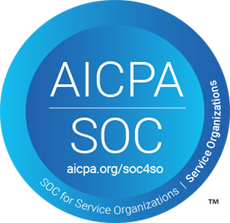Have you tried to print something out lately? As in, physically printing out a file onto a piece of paper from your phone, device or laptop. It’s beguiling that in 2021, connected to my home Wi-Fi, 50% of the time I still must dig out the hardwire to print out a document (of note, the printer is less than two feet from my computer). And while there could be a solid case made for wasting paper on a printed document, I’d like to take this moment to remind you that the healthcare system still very, very much relies on physical paper records. Crazy, right?! But it’s true. It has been a pain point in the industry for years, from concerns of waste and maintenance to security challenges. There is one particular use case highlighted by this conversation that we want to focus on today: the hand-off from Emergency Medical Services (EMS) to hospitals. We’re going to examine three very big inefficiencies associated with this emergent and critical transition for patients. And you may not be all that surprised to hear…there is printing involved.
#1 – A Printed PCR is Often the Core Record Following the Patient
When an EMS team arrives at the hospital to transfer the patient for emergent medical care, they deliver what is known as a PCR, which stands for Pre-hospital Care Report. In general care settings, PCR can also refer to Patient Care Report, but we’ll stick with the former given our current focus. This continuity of care document details what care or interventions have already been delivered by first responders. But very often, it’s not available to hospital physicians and staff until after the patient has been discharged. Come again. Hospital and ED physicians don’t have access to these records?! Unfortunately, it’s true.
Like other manifestations of inefficient data delivery, the EMS-to-hospital hand-off is basically functioning without the in-transit medical data because of issues with…you guessed it…the ability to print. Busy EMS providers often can’t connect to printers, or printers are not functioning as expected (perhaps due to lack of maintenance or network connectivity). Therefore, the documentation may be faxed, but regardless, it won’t find a way into the attending doctor’s hands until much later. Imagine bearing responsibility for an emergent medical situation, completely blind to any information that could potentially aid in the care delivery and outcome for the patient. And I thought I was frustrated with my printer!
#2 – Paper PCRs Have to be Digitized and Assigned in the EHR
Let’s say the printers were working. Huzzah! After the paper medical record is printed, it will then be scanned. That’s right: the electronic document will be printed, only to be scanned…so that it’s electronic again. True, it’s digitized for a different software, but literally nothing else is changing to the document. If this strikes you as a tremendous waste of time, you’re not alone. This means a human is tasked with turning once-electronic-but-now-physical-paper-documents into electronic files for the EHR. The juice, as they say, is so not worth the squeeze.
#3 – There are Many Data Gaps When EMS Transfers Patients
Not only does the long-standing lack of connectivity for EMS providers mean they’re often operating blind (unsure of pre-existing conditions, active medications, contraindications to interventions, etc.), but they’re also sometimes still visually impaired (so to speak) after transferring a patient to the hospital. They may not even know the patient’s name! As you can imagine, medical records lingering for John Doe mean that not only is relevant patient data not getting to other providers in the care continuum, but also that EMS may not be able to bill for their highly valuable services.
There’s Good News…Right?
We understand the challenges and frustrations experienced by these incredibly brave and life-saving providers, and it’s because we’ve worked alongside them to implement solutions that address and eliminate these very inefficiencies. There is much to be gained from timely, efficient and accurate connectivity between care providers – all care providers – and we’re elated to offer solutions that can close these gaps quickly, simply and cost effectively. It’s time to leave those printers and faxes in the 90s…there is a better way!







